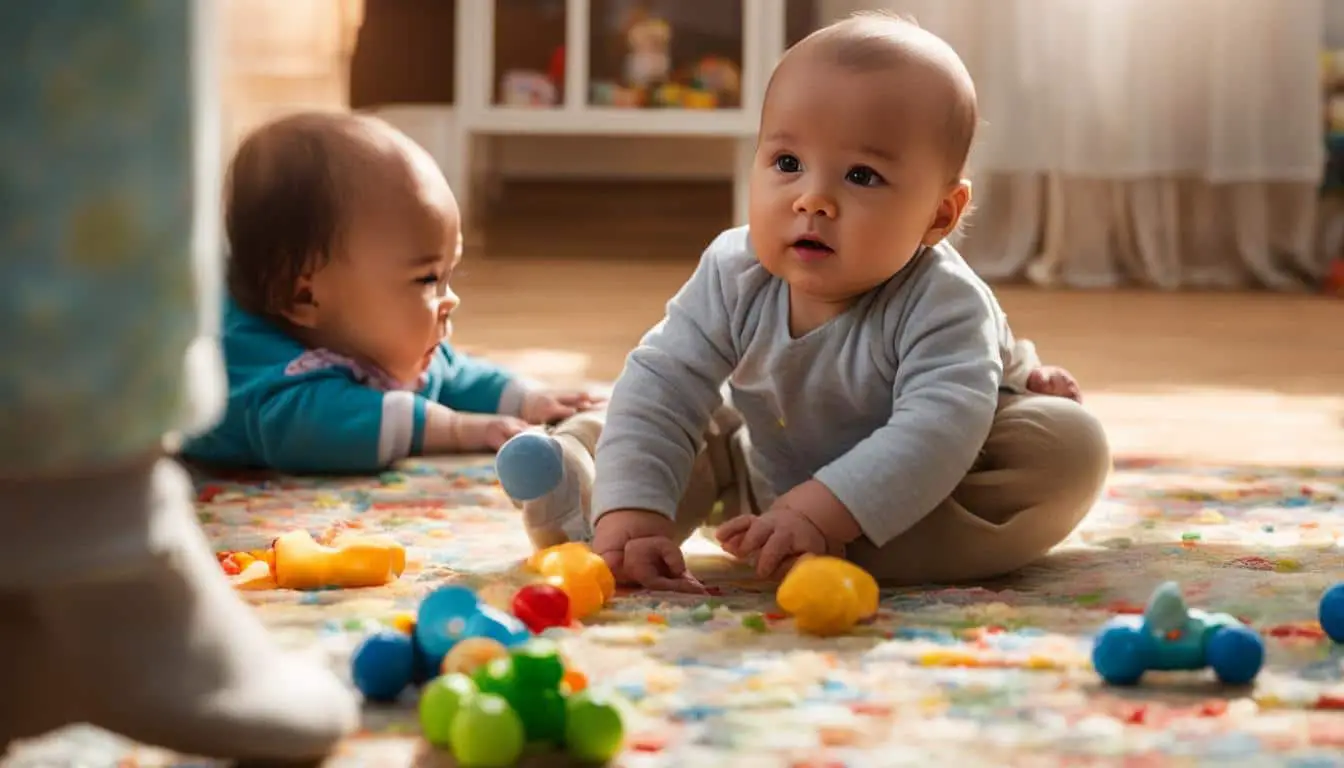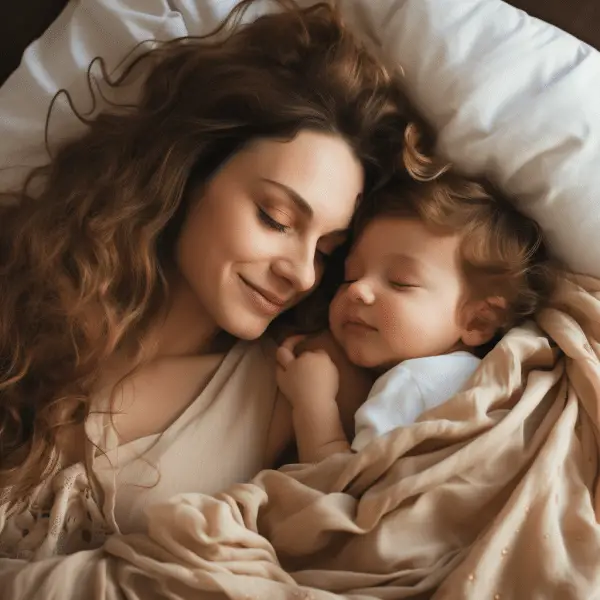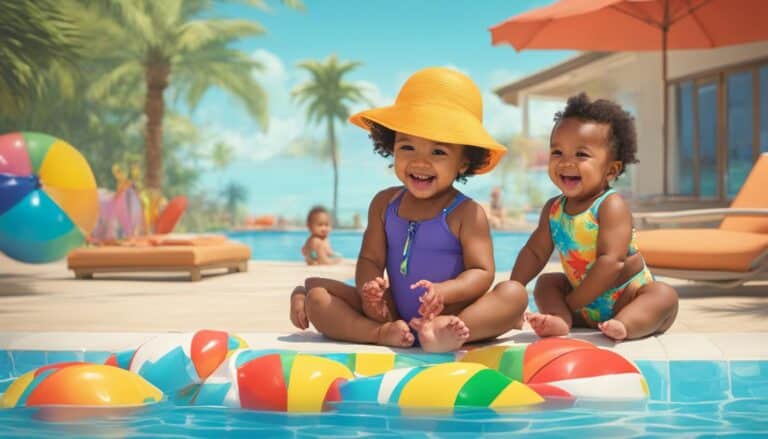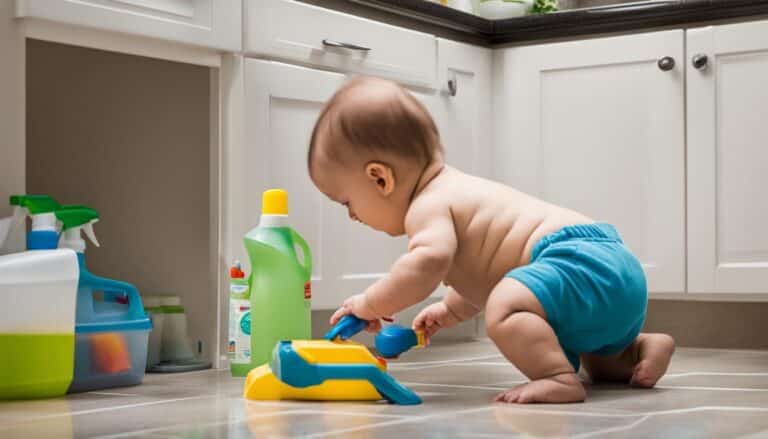Handling Separation Anxiety in Babies
Welcome to my article on handling separation anxiety in babies. Separation anxiety is a common experience for both babies and parents, and it can be challenging to navigate. In this section, we will explore what separation anxiety is, why it occurs, and tips for helping your baby cope with it. We will also touch on how separation anxiety can affect infant development and sleep. Let’s dive in!
Key Takeaways:
- Separation anxiety is a normal part of a child’s development and usually resolves on its own.
- Babies become aware of their dependence on caregivers and feel unsafe without them, leading to separation anxiety.
- Tips for handling separation anxiety include practicing short separations, talking about the reunion, leaving something comforting with your baby, and making goodbyes positive.
- If separation anxiety persists or causes significant distress, seeking guidance from a healthcare professional may be beneficial.
Understanding Separation Anxiety in Young Children
Separation anxiety is a normal part of a child’s development and indicates a secure attachment to their caregiver. It typically begins around 4-5 months of age but becomes more pronounced around 9 months. The development of separation anxiety is linked to babies’ increasing awareness of object permanence, the understanding that objects (including their caregivers) continue to exist even when out of sight. This newfound awareness can lead to feelings of distress and fear when separated from their primary caregiver.
Toddlers and preschoolers may also experience separation anxiety during times of big life changes, such as starting school or the arrival of a new sibling. These periods of heightened anxiety are often temporary and resolve as children adjust to the changes. Recognizing the signs of separation anxiety in young children is crucial for parents to provide support and reassurance.
Signs of separation anxiety can include increased clinginess, crying when separated from a caregiver, fear of strangers, and sleep struggles. It’s essential for parents to respond to their child’s anxiety with patience and understanding. Providing regular cuddling and comfort can help children feel secure and loved, while practicing short separations in a safe environment can gradually build their confidence and resilience. Additionally, maintaining a consistent routine and fostering independence can help children feel more in control of their surroundings, reducing anxiety.
Table: Signs of Separation Anxiety in Young Children
| Signs of Separation Anxiety | Description |
|---|---|
| Increased clinginess | Child becomes more attached and reluctant to be away from the caregiver. |
| Crying when separated from a caregiver | Child expresses distress and anxiety through tears when separated. |
| Fear of strangers | Child shows reluctance or fear when encountering unfamiliar individuals. |
| Sleep struggles | Child experiences difficulties falling asleep or staying asleep due to anxiety. |
Understanding separation anxiety in young children is crucial for parents to navigate this normal stage of development. By providing love, support, and consistent routines, parents can help their children build resilience and cope with their anxiety in a healthy way.
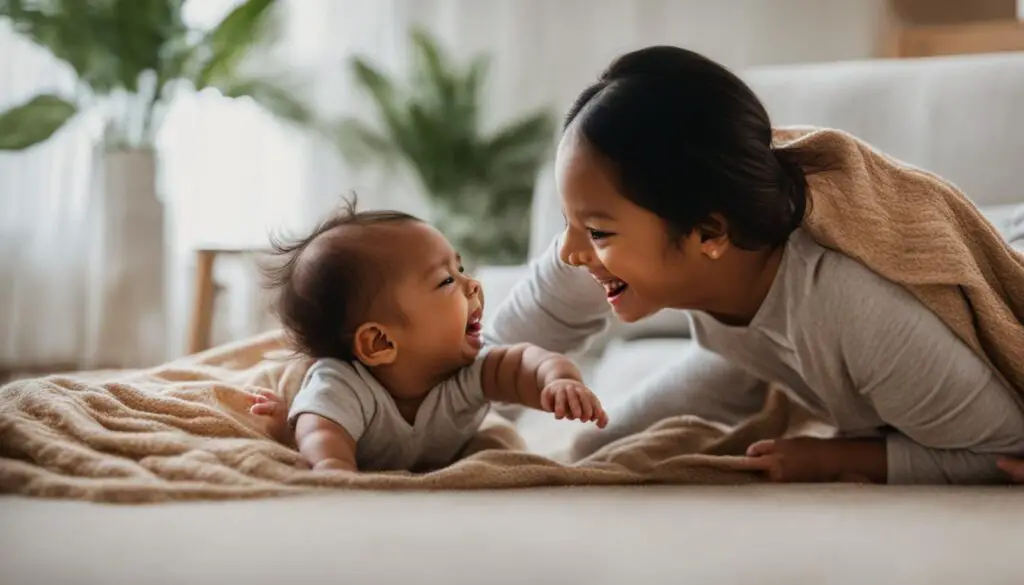
Tips for Dealing with Separation Anxiety in Toddlers and Preschoolers
Separation anxiety can be particularly challenging for toddlers and preschoolers, especially during times of big life changes. It is common for toddlers and preschoolers to experience separation anxiety between the ages of 2 and 4, with peak surges around age 3. Signs of separation anxiety in toddlers and preschoolers may include increased clinginess, crying when separated from a caregiver, hesitation around strangers, tantrums when you leave the room, and fear of the dark.
Strategies for helping toddlers and preschoolers cope with separation anxiety
1. Spending intentional 1-on-1 time: Setting aside dedicated time to bond with your child can help them feel secure and connected to you.
2. Practicing planned separations through games: Engaging in activities like peek-a-boo or hide-and-seek can help your child become more comfortable with temporary separations and understand that you will always return.
3. Preparing them for time apart: Talking with your child about what to expect when you are separated can help alleviate anxiety. Explain where you will be going and reassure them that you will return.
4. Using a brief goodbye ritual: Establishing a consistent goodbye routine, such as a special hug or a favorite phrase, can provide comfort and create a sense of predictability.
5. Staying calm and confident: Children look to their caregivers for guidance, so maintaining a calm and confident demeanor during separations can help reassure them that everything will be okay.
6. Avoiding rushing: Allow your child time to adjust to the separation and avoid rushing the goodbye process, as this can increase anxiety.
7. Creating a regular routine: Establishing a predictable daily routine can provide a sense of security for your child and help them feel more at ease during separations.
Lovies or transitional objects can also provide comfort and reduce sleep struggles associated with separation anxiety.
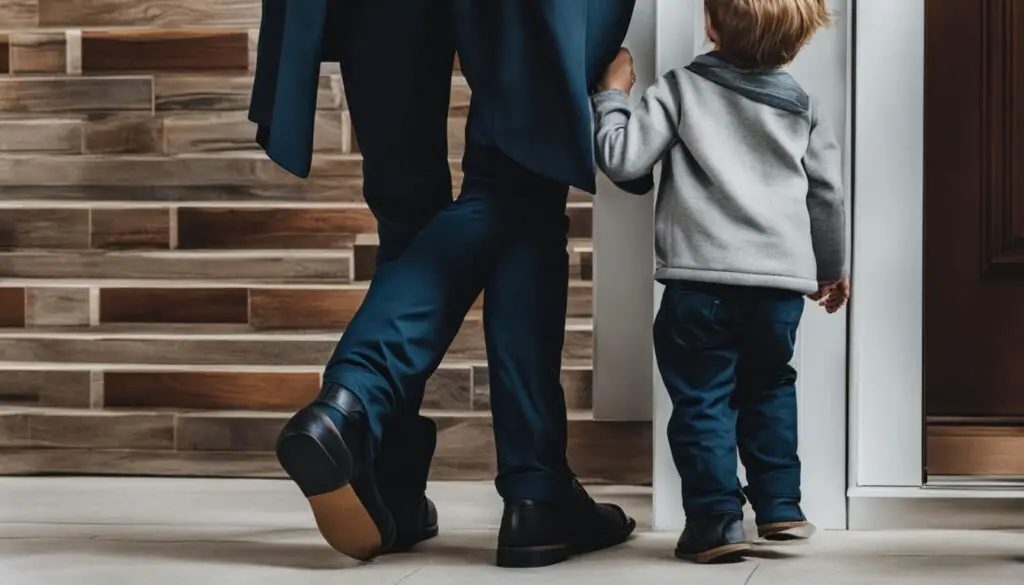
Table: Strategies for Dealing with Separation Anxiety in Toddlers and Preschoolers
| Strategy | Description |
|---|---|
| Spending intentional 1-on-1 time | Setting aside dedicated time to bond with your child can help them feel secure and connected to you. |
| Practicing planned separations through games | Engaging in activities like peek-a-boo or hide-and-seek can help your child become more comfortable with temporary separations and understand that you will always return. |
| Preparing them for time apart | Talking with your child about what to expect when you are separated can help alleviate anxiety. Explain where you will be going and reassure them that you will return. |
| Using a brief goodbye ritual | Establishing a consistent goodbye routine, such as a special hug or a favorite phrase, can provide comfort and create a sense of predictability. |
| Staying calm and confident | Children look to their caregivers for guidance, so maintaining a calm and confident demeanor during separations can help reassure them that everything will be okay. |
| Avoiding rushing | Allow your child time to adjust to the separation and avoid rushing the goodbye process, as this can increase anxiety. |
| Creating a regular routine | Establishing a predictable daily routine can provide a sense of security for your child and help them feel more at ease during separations. |
Conclusion
Separation anxiety is a common and normal part of a child’s development, indicating a strong bond between the child and their caregiver. As parents, it is important to understand the reasons behind separation anxiety and implement strategies to help our children cope.
One effective tip for handling baby separation anxiety is to practice short separations. Gradually increase the duration of time apart to help your baby become more comfortable. Additionally, talking to your baby about what will happen when you are reunited can provide reassurance and build trust.
For toddlers and preschoolers, creating positive goodbyes is essential. Establishing a brief goodbye ritual, such as a special handshake or a comforting phrase, can help ease their anxiety. It’s also beneficial to spend intentional one-on-one time with them and practice planned separations through games like peek-a-boo or hide-and-seek.
Remember, separation anxiety is a temporary phase that typically resolves on its own as children grow older and gain a better understanding of their caregiver’s return. By providing comfort, reassurance, and implementing these tips, we can support our children through this developmental milestone.
FAQ
What is separation anxiety in babies?
Separation anxiety in babies is a normal part of their development between the ages of 6 months and 3 years. It occurs when babies become aware of their dependence on their caregivers and feel unsafe without them.
How can I help my baby cope with separation anxiety?
There are several tips for handling separation anxiety in babies. You can practice short separations, talk about what will happen when you are reunited, leave something comforting with your baby, and make goodbyes a positive experience.
When should I seek professional help for my baby’s separation anxiety?
If your baby’s separation anxiety is causing significant distress or lasts for an extended period of time, it may be helpful to seek guidance from a healthcare professional.
When do babies start experiencing separation anxiety?
Babies can start experiencing separation anxiety as early as 4-5 months, but it typically becomes more pronounced around 9 months.
What is separation anxiety in young children?
Separation anxiety in young children is a normal part of their development. It occurs because children are developing a sense of object permanence and become aware that their caregivers continue to exist even when out of sight.
How can I help my young child cope with separation anxiety?
You can help your young child cope with separation anxiety by providing regular cuddling and comfort, practicing brief separations, playing games to encourage separation, fostering independence, and maintaining a routine.
How can I handle separation anxiety in toddlers and preschoolers?
To handle separation anxiety in toddlers and preschoolers, spend intentional 1-on-1 time with them, practice planned separations through games, prepare them for time apart, use a brief goodbye ritual, stay calm and confident, avoid rushing, and create a regular routine.
What can I do if my toddler or preschooler is struggling with separation anxiety?
If your toddler or preschooler is struggling with separation anxiety, spend intentional 1-on-1 time with them, practice planned separations through games, prepare them for time apart, use a brief goodbye ritual, stay calm and confident, avoid rushing, and create a regular routine.
What is the importance of handling separation anxiety in children?
Handling separation anxiety in children involves understanding the reasons behind it and implementing strategies to help them cope. By providing comfort and reassurance, parents can help their children navigate separation anxiety more effectively.
Will separation anxiety in children resolve on its own?
Yes, separation anxiety in children will typically resolve on its own as they grow older and develop a greater understanding of their caregiver’s return.
